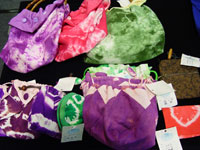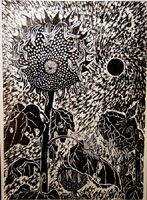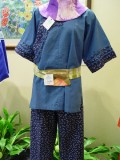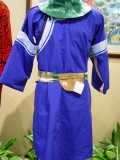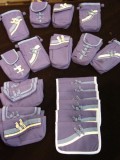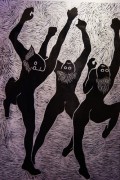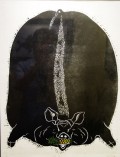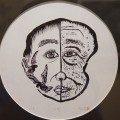TELDAP Collections
| Exhibition of Images of Hakka Females (8 of 8): Huang Zihuan (黃紫環)-Chiseling with Passion and Painting with Love to Continue Hakka Culture |
|
Throughout history, a great deal of art works have been created in the combination of fine lines of drawing and rustic strokes of woodblock chiseling, such as illustrations, paintings and painting books, evidential study of important art and cultural objects, religious application, Chinese New Year paintings, game cards, etc. In the realm of Taiwan Hakka culture, Huang Zihuan is an artist working silently with unusual determination to try every artistic medium available for the testament and continuation of Hakka culture. The Ziyou Workshop opened on Jan. 1 this year is the crystallization of her sweat and blood over the years. The workshop focuses on Hakka culture, using blue blouses, pieces of Hakka clothing, eating utensils, bags, daily commodities and other artistic objects to interpret Hakka culture anew. The artist herself is talented in many areas but specializes in oil painting, watercolor painting, sculpture and woodblock printing, which she had studied for the longest time.
“Among the minority groups in Taiwan, every aborigine tribe has its own totem and doorframe carvings. Their visual symbols are so strong but the Hakka people do not have their own ID and a large proportion of Hakka culture is being lost.” This is exactly what Huang Zihuan is trying to remedy. She has worked hard to bring Hakka culture into the community to be closer to people. She not only teaches at the community university but also gives woodblock-printing lessons at Futien Elementary School. She hopes Hakka culture can be rooted through this and flourish once again. Of all her art skills, woodblock printing, in which she has invested over 13 years, really stands out the most. The 43-year-old Huang Zihuan was born in Linluo Township in Pingtung County. At the time, there were already six boys and one girl in the family and she was therefore adopted by the Huang family. This resulted in a dark teenage period. She left home for work at the age of sixteen. After getting married at twenty-five, she opened a shop in Neipu to carve chops and paint portraits for people. When she started learning block printing at the age of twenty-nine, her life took a different course.
By chance, she had the luck to take block-printing lessons from the famous artist Chen Guozhan. She recalled having no inspiration at all when she made her first block print. She could not sleep for three days but her first try, “Future”, won her instant fame – she won the third place in Pingtung County Art Exhibition! Later on she studied under the renowned wood carver Fang Xiang and Profession Chen Qimai. Her creative career went on and she continued to win prizes in Taipei Art Exhibition, Kaohsiung Art Exhibition, Taiwan Provincial Art Exhibition and the ROC Block Print Association Exhibition. She participated in three joint-exhibitions and had three individual exhibitions in China and Japan. Colors other than black and white are seldom seen in her works. She said: “I like the contrast between black and white, the quickness of each and every line and stroke.” Her creations can be roughly divided into two sections: the first is mostly the recording of Hakka village architecture and cultural sights like the Jingzi Pavilion and the Hakka Cultural Museum; and the other is the projection of her own thoughts such as “Grandma’s Urn” – a common-looking big urn used for rice storage in childhood symbolizes where there is food, there is hope. Works of this type are often deep in context and offer infinite room for imagination and enlightenment.
Huang Zihuan is quite worried about the gap in Hakka culture and the growing distance between modern day Hakkas and the traditional Hakka matrix. She tries hard to link the past and the present together and once made plans to design for every Hakka village in the Liuduei area in Kaohsiung and Pingtung a totem in combination with the village culture and agricultural specialty – for example, the pig trotter could be used for Wanluan and the wax apple would be for a place where wax apples were grown. This year she has been devoted to promoting the unique Hakka Blue blouses. She made the designs and gave them to tailors for production. There are other handcrafted daily commodities like bags for multiple purposes. The handmade stitches are at least as fine as machine-made products. Huang Zihuan is also able to infuse the blue blouses in daily life through teaching and Hakka cultural activities to create a new market for the traditional Hakka apparel. She supports her ideal with her meager teaching income alone and never regrets or complains. The Ziyou Workshop is an important beginning for her to lead to a wider path and bring new light for Hakka culture. (Written by Qi Shifang)
Text and images are provided by Council for Hakka Affairs, Executive Yuan
|
|||||||||||||||||||||||








